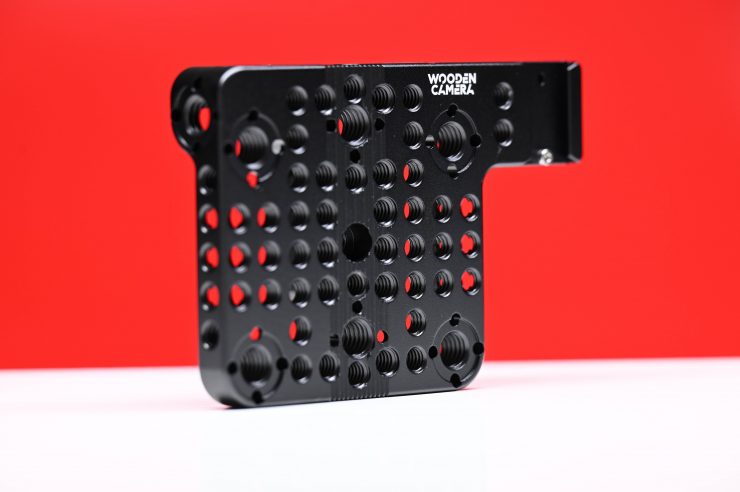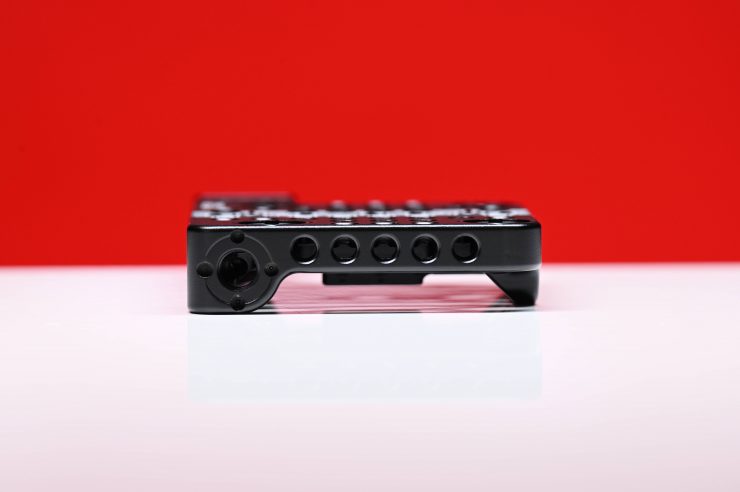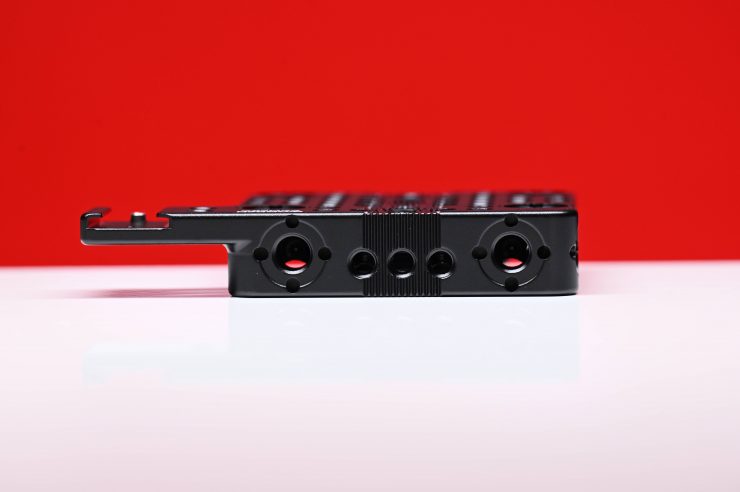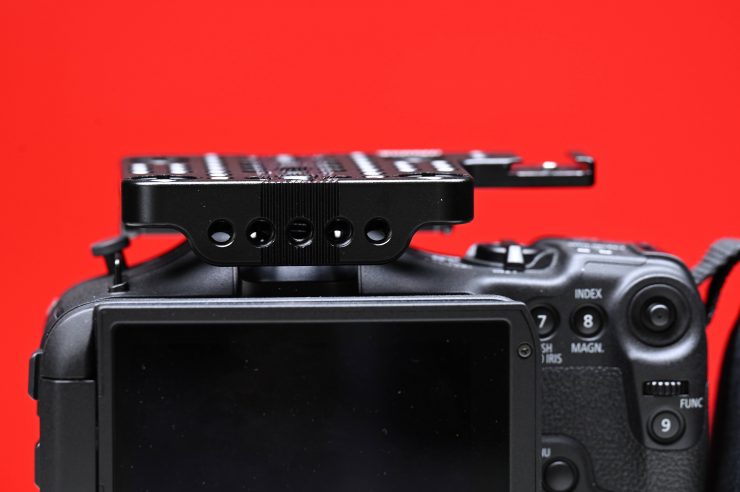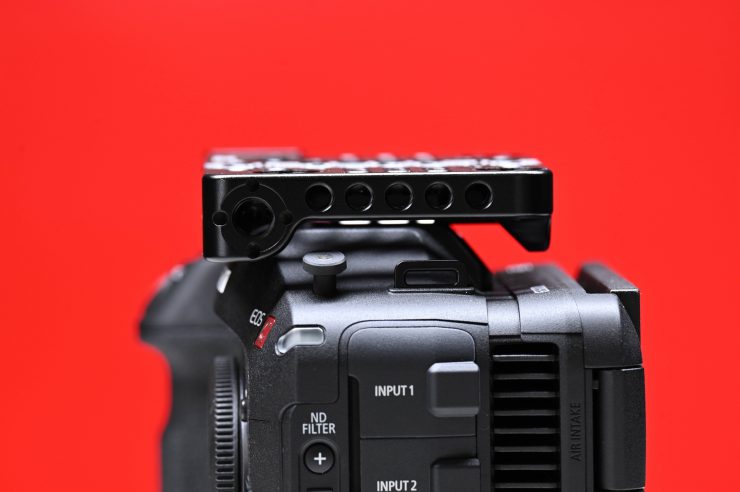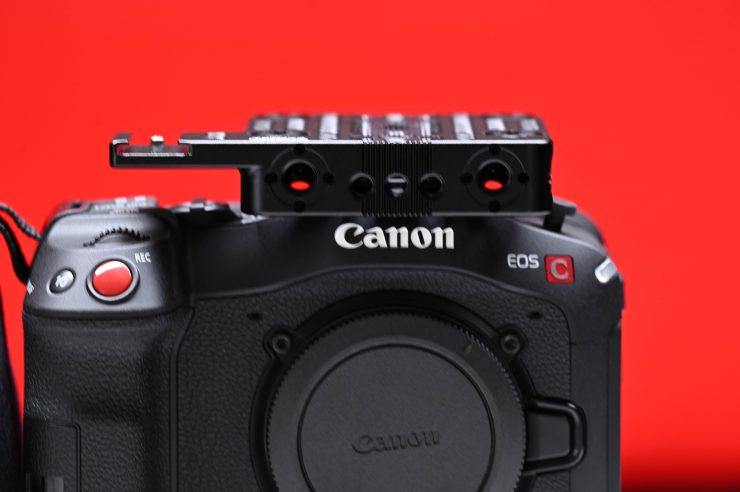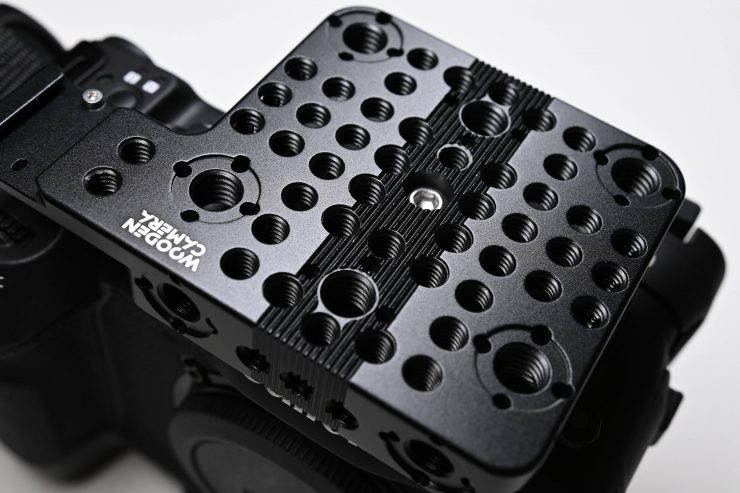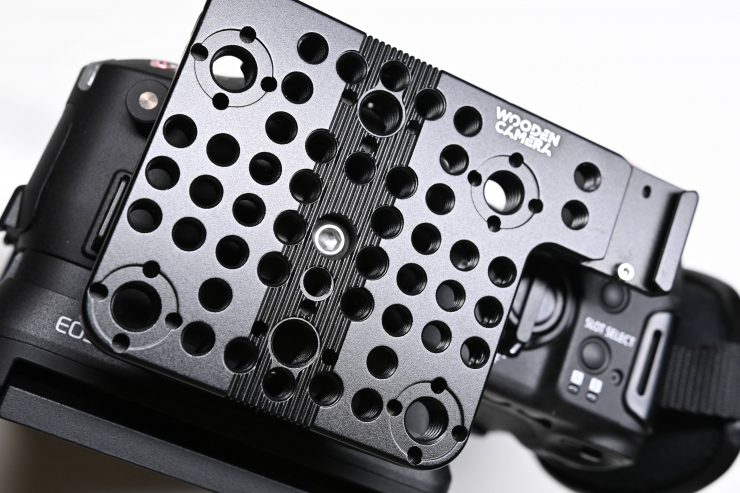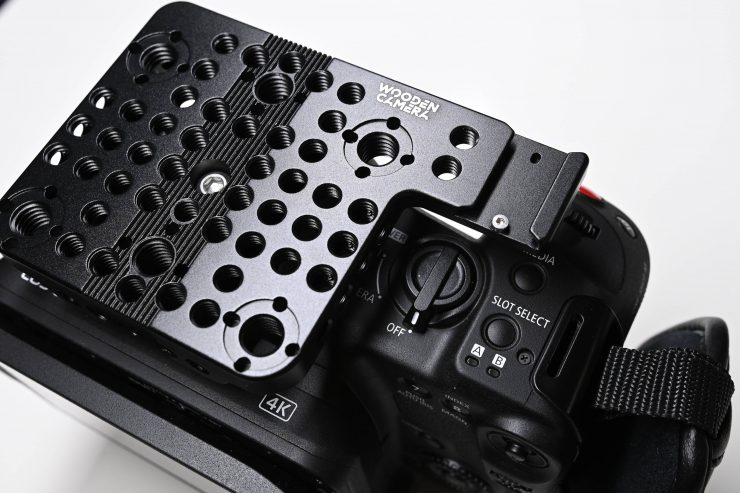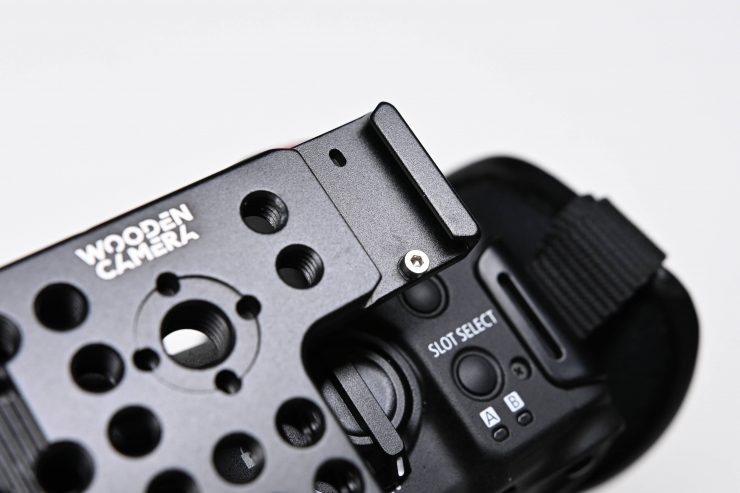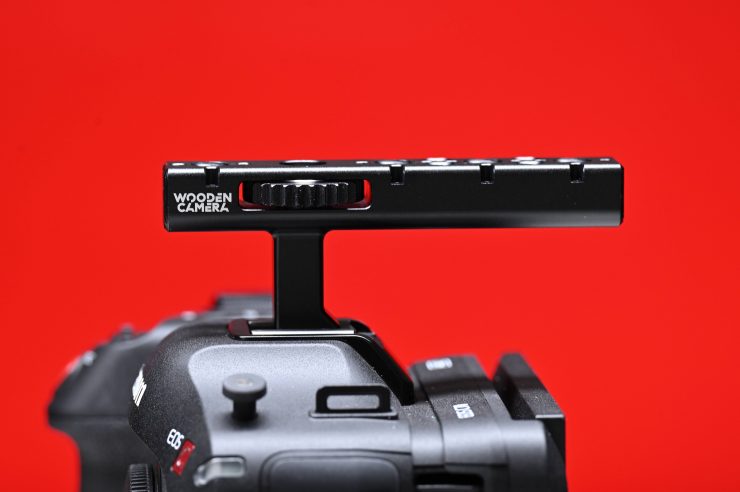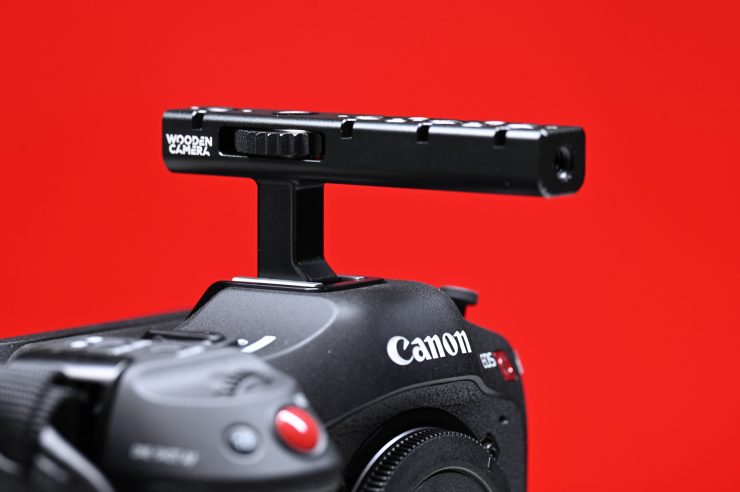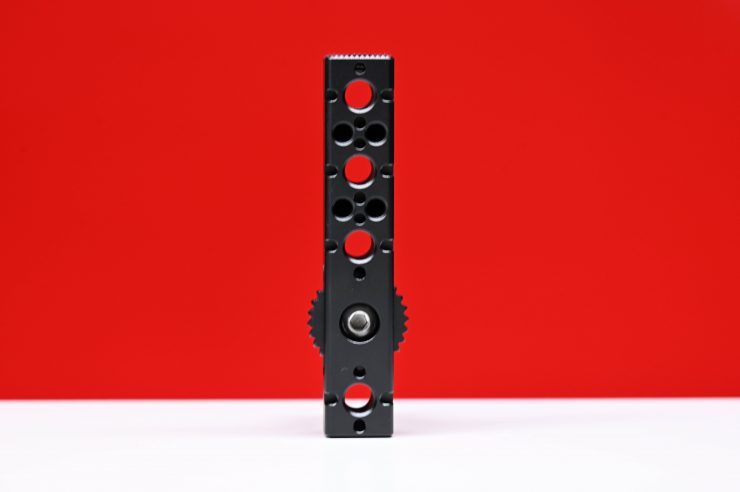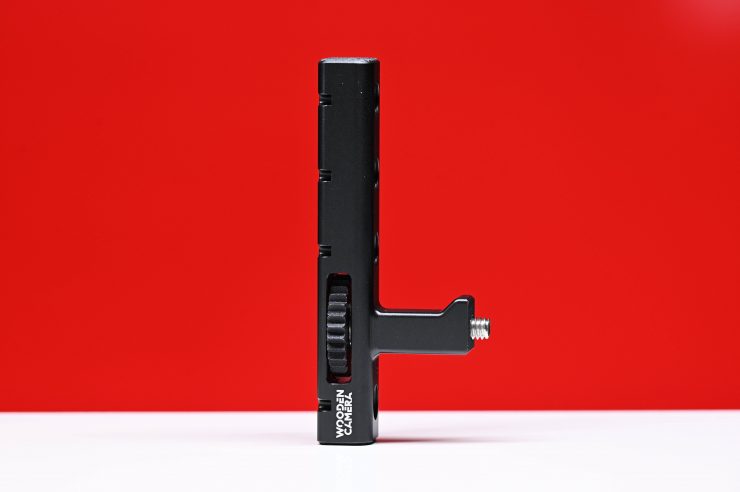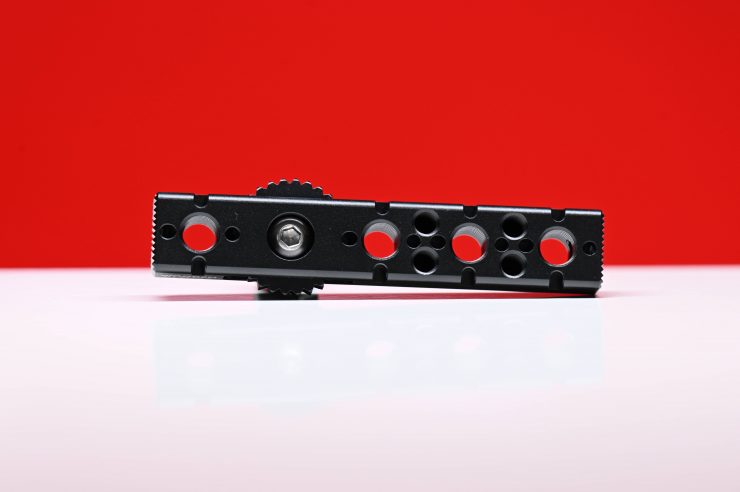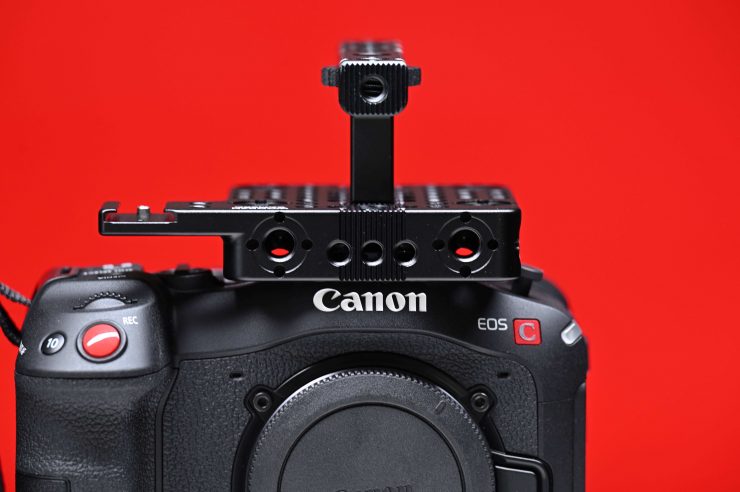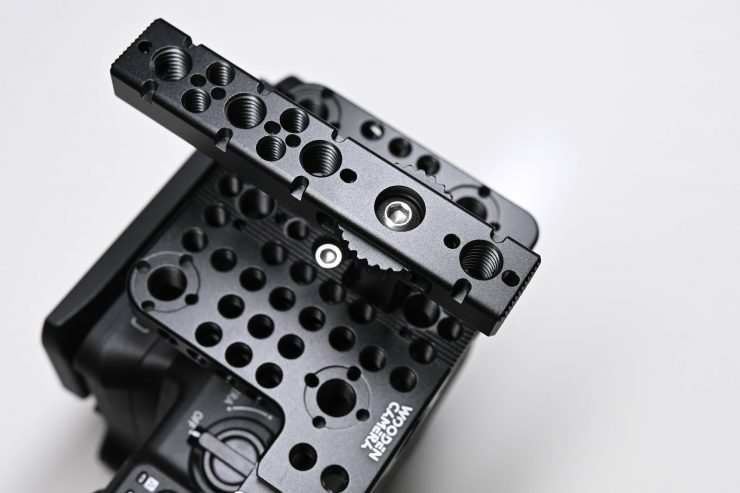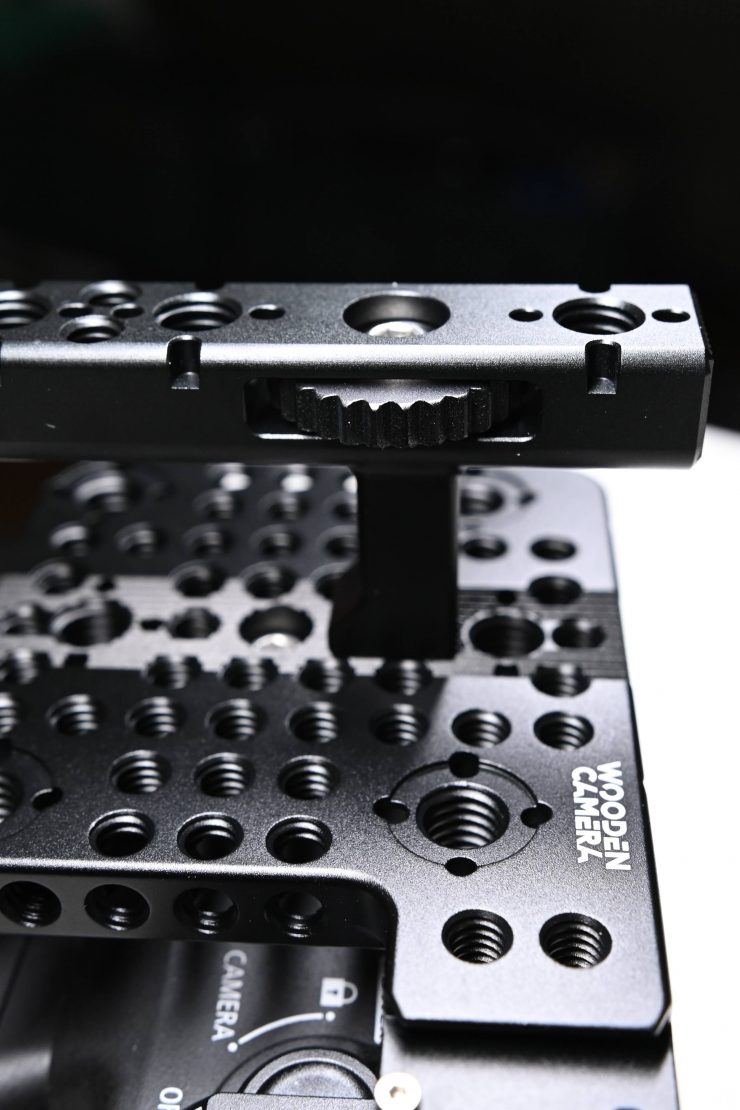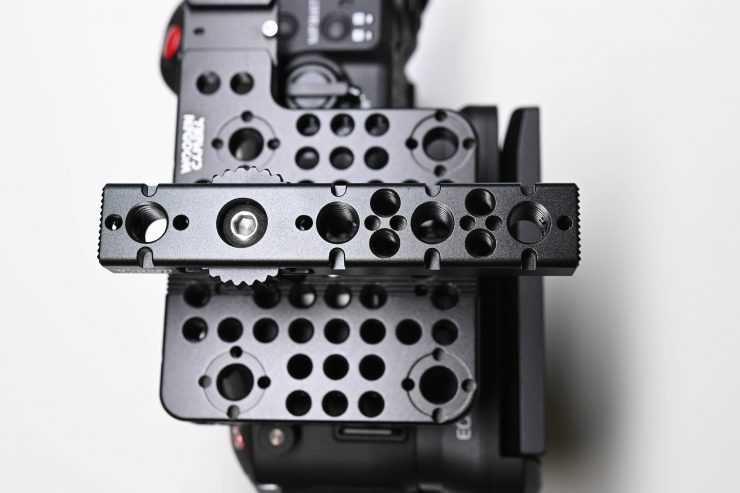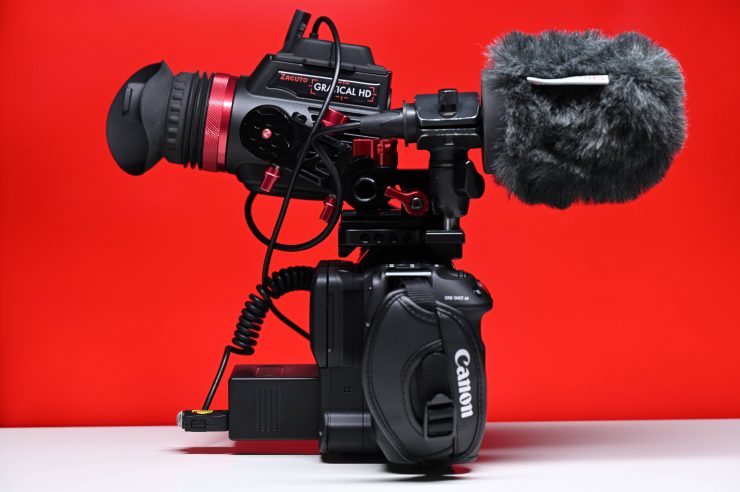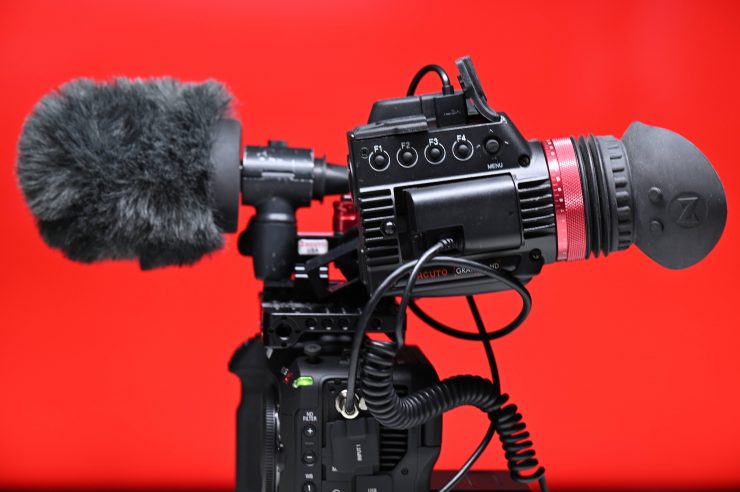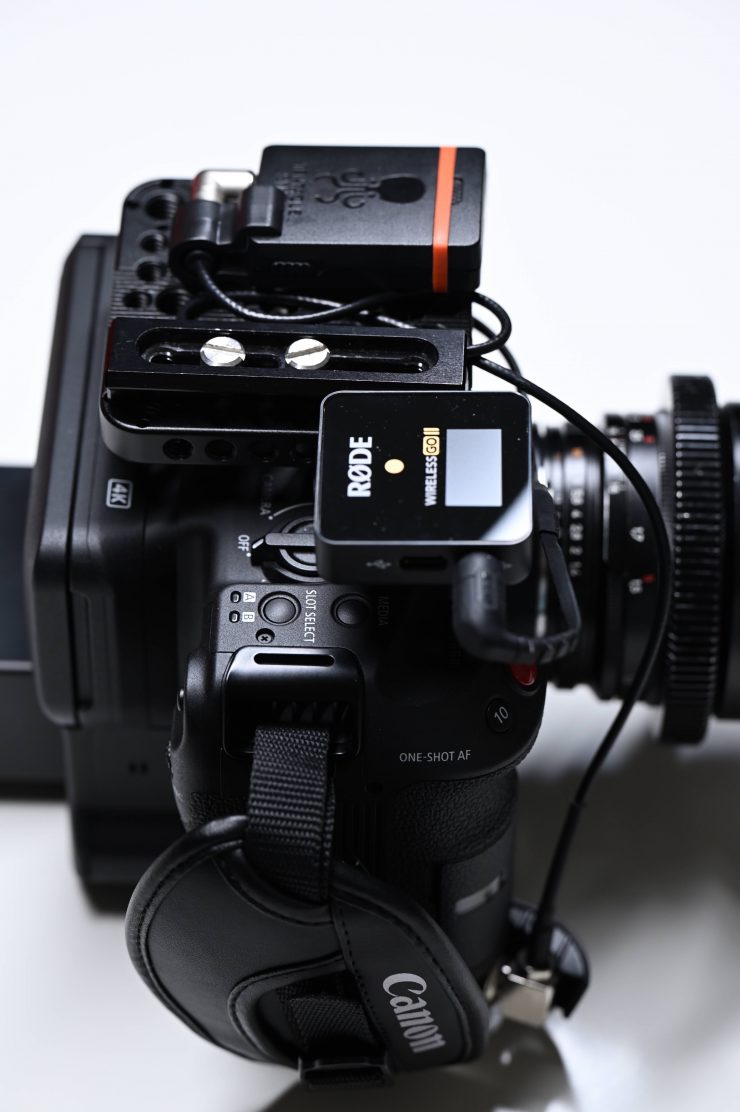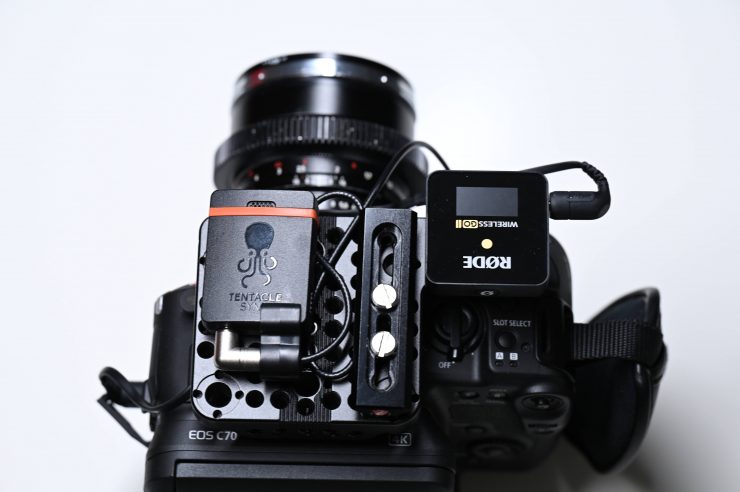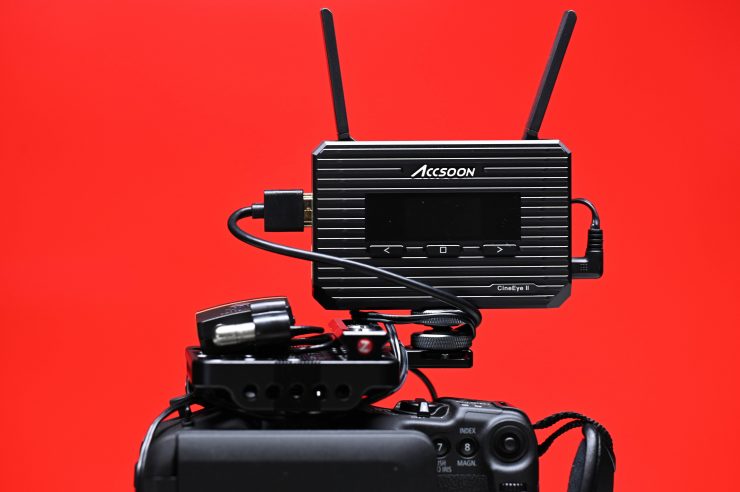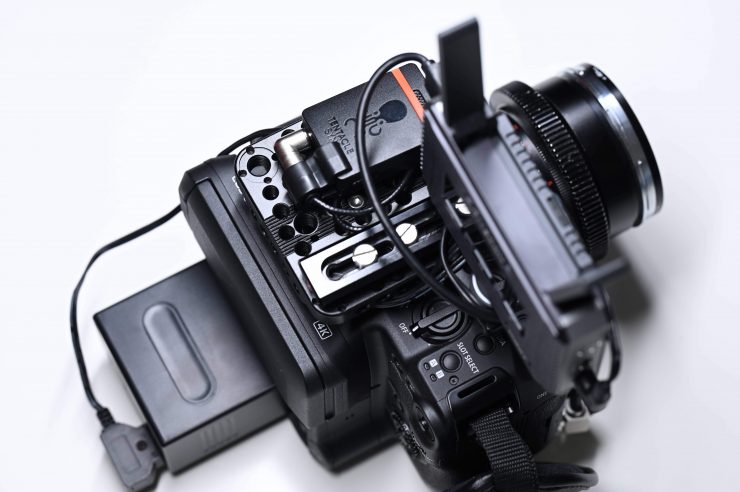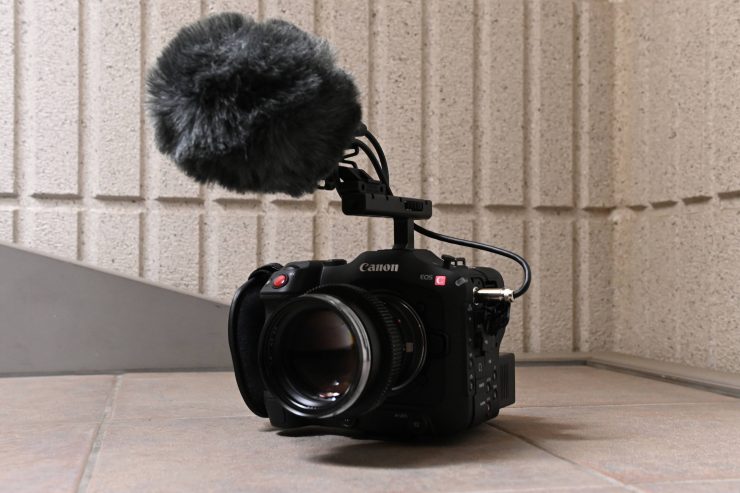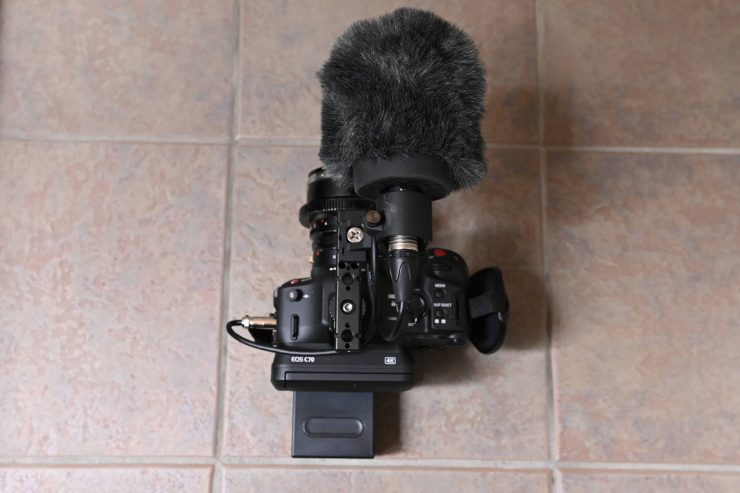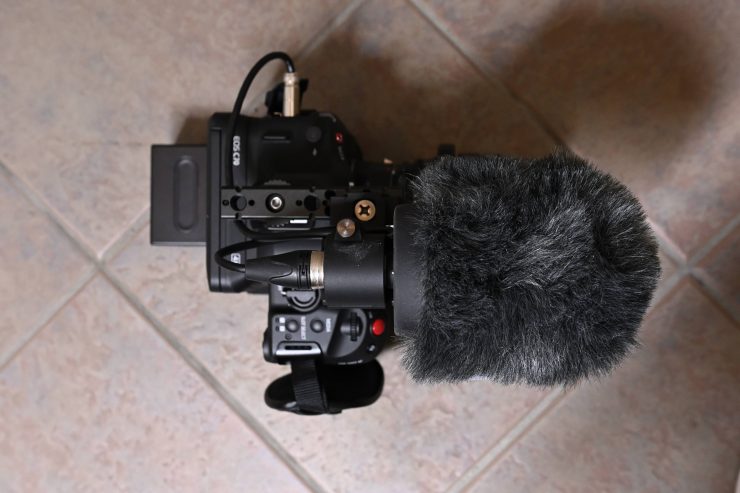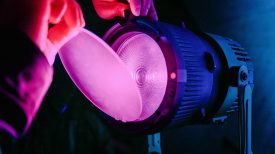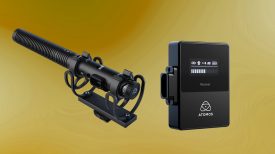
One of the appeals of the Canon C70 is that it is a relatively small and compact digital cinema camera. However, if you do want to mount some basic accessories it is extremely hard because of the lack of mounting points.
In my opinion, the last thing you want to do is to make the C70 larger and heavier. This presents a challenge because if you want to add some accessories you don’t want to make the C70 twice the size to do so.
There actually isn’t a lot of options out there for the C70, and I personally didn’t want to put the camera into any sort of cage. The camera has a lot of buttons and connectors on the side and wrapping it up inside a cage presents its own challenges.
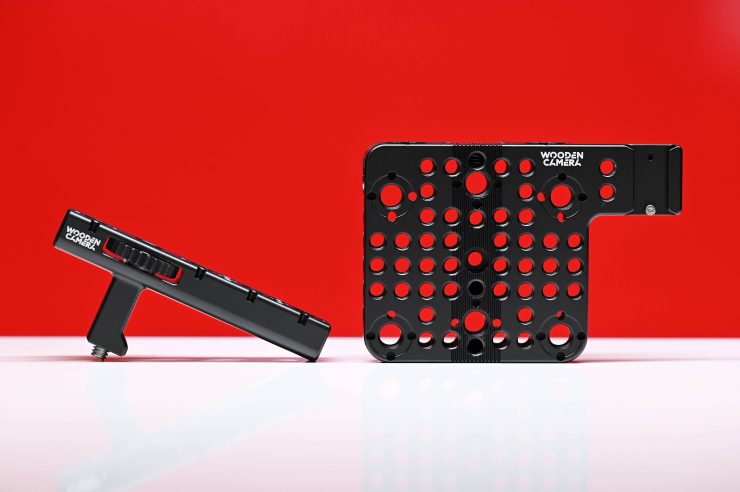
For my requirements, I decided to buy the Wooden Camera Top Plate and Mini Top Handle. So was my choice the right one? Well, let’s find out.
Top Plate
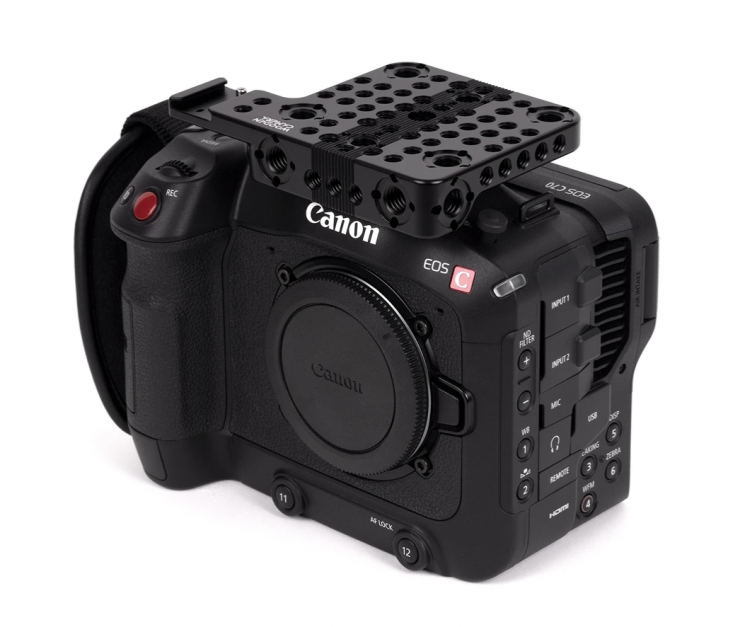
The Top Plate for the C70 attaches using the standard screw that you would use to attach the Canon handle to the camera.
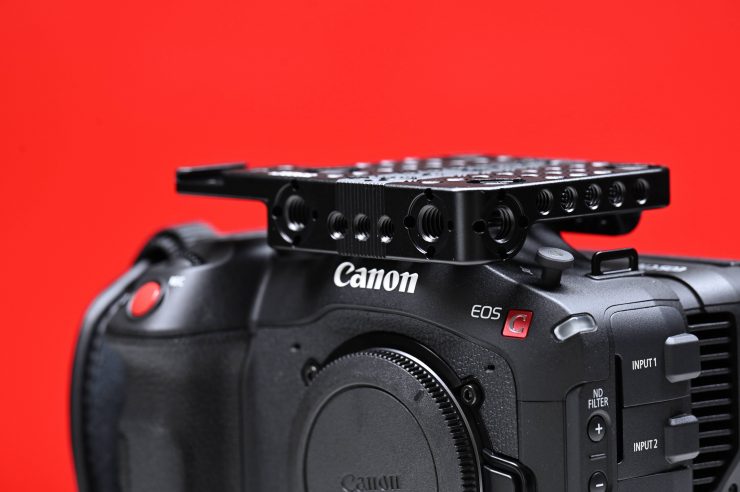
Even though the top plate is reasonably thick it doesn’t change the overall form factor of the camera too much.
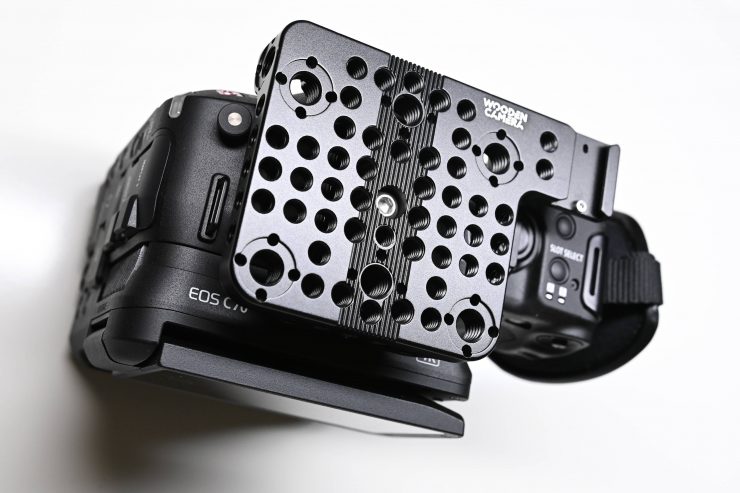
The Top Plate is essentially a cheese plate that contours to the top of the camera body. It features multiple ¼”-20 screw hole arrays along the top and sides and multiple ⅜”-16 screw holes with ARRI standard accessory mounts.
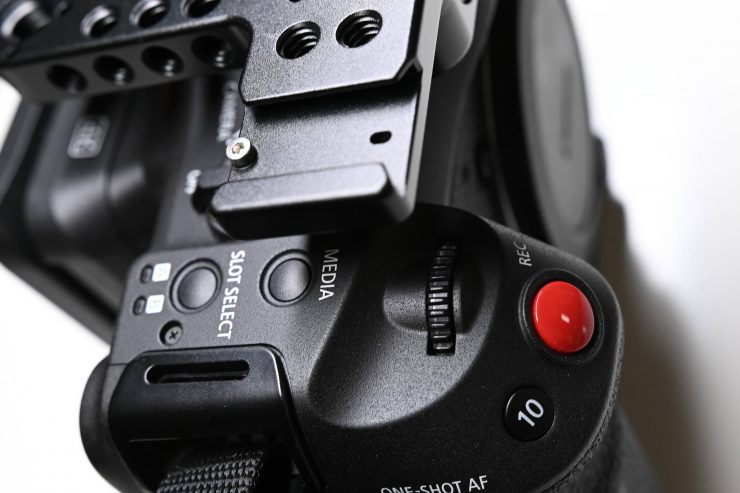
There is also a Cold Shoe offset which you can use to attach microphones, small lights, etc. The nice aspect about the top plate is that it doesn’t get in the way of any of the buttons, dials, or switches.
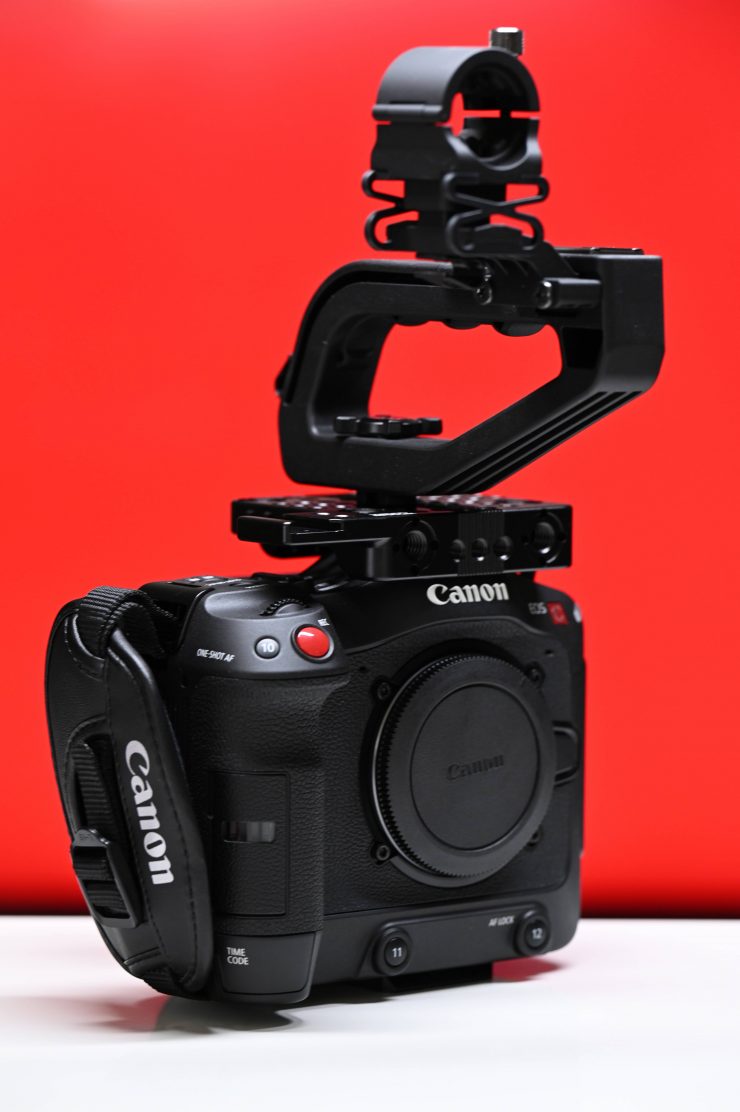
You could attach the original Canon top handle to the cheese plate, but because it only attaches through one screw it is prone to twisting. While you could do it, I wouldn’t recommend it.
The Top Plate weighs in at 150g (0.3 lbs) and it retails for $299 USD.
Mini Top Handle
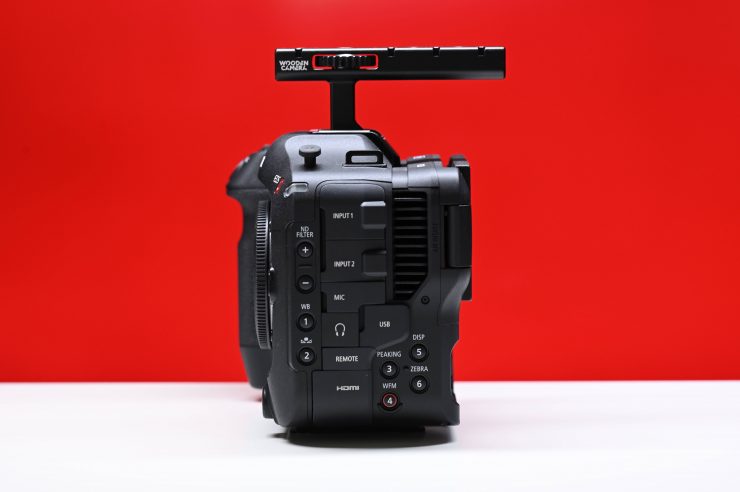
The Mini Top Handle attaches to the C70 where you would attach the original included Canon top handle. You turn the attachment thumbwheel to tighten a ¼”-20 screw into the hot shoe’s mounting point.
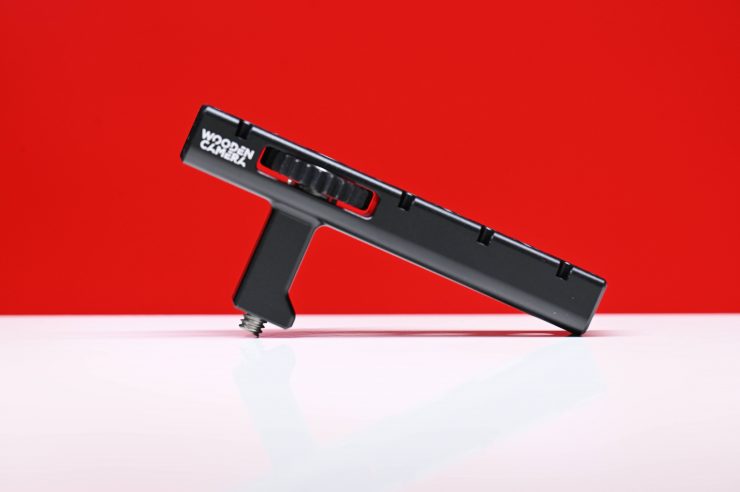
The Mini Top Handle features 4x ¼”-20 screw holes, 4x ⅜”-16 screw holes with ARRI standard accessory mount, and 2x Canon Accessory Mounts at the front and back of the handle.
The only thing I felt the Mini Top Handle was missing was a cold shoe mount.
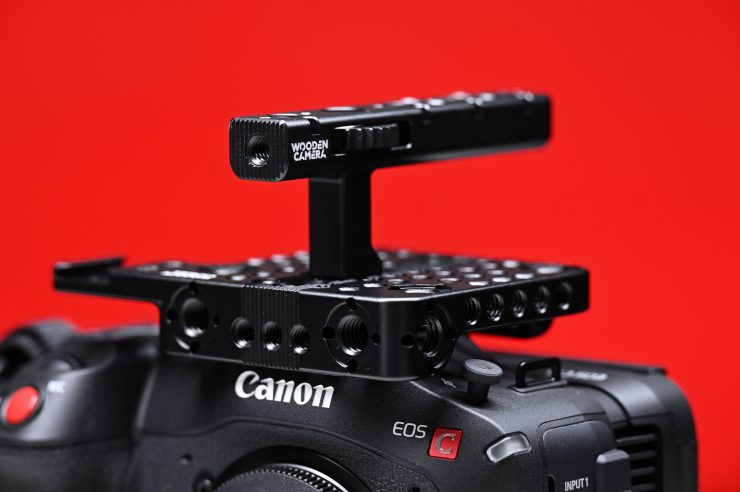
You can also attach the Mini Top Handle to the Top Plate. Because there are so many tapped holes on the Top Plate you can put the Mini Top Handle in a wide array of positions depending on your needs.
The Mini Top Handle weighs 84g (0.2lbs) and it costs $95 USD.
Small Footprint
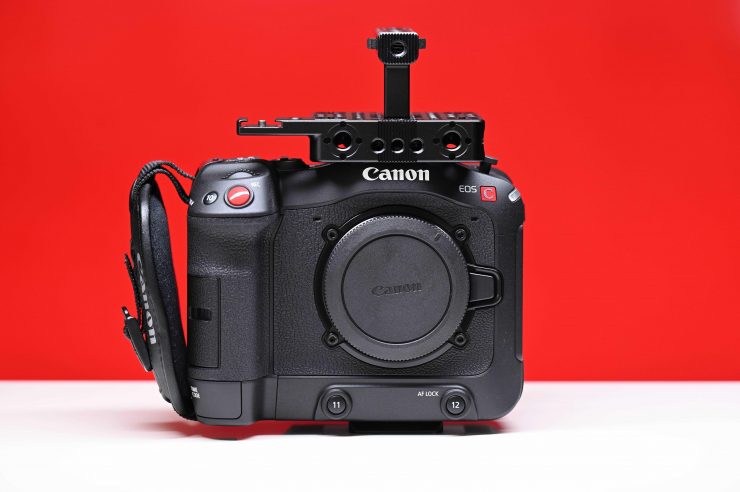
So, first things first. I like that I have solved one of the main issues I have with the C70, the lack of mounting points. The combination of the Mini Top Handle and the Top Plate still keeps the camera’s footprint to a minimum, while adding a ton of mounting points. Between the handle and the top plate, there are more mounting points than I will ever require.
What you need to factor in is that the physical area of the Top Plate isn’t huge so regardless of how many mounting points you have there are only so many accessories you could fit on it anyway.
Usability
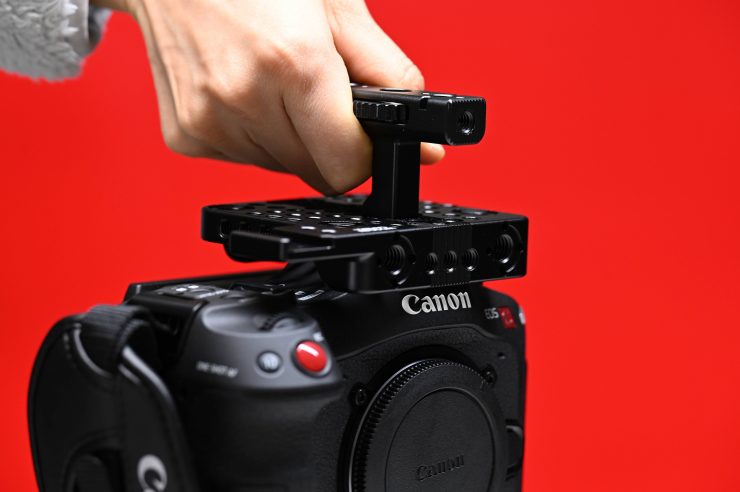
Ok, so we haven’t increased the footprint by much and we have managed to add a ton of mounting points but has the combination of the Top Plate and the Mini Top Handle actually improved usability?
The Mini Top Handle is as its name suggests, pretty small. It is a little hard to hold onto and I wouldn’t personally use it to carry around the camera. If you actually attach anything to the handle then you can’t really use it to hold the camera anyway.
For my own personal applications, I am more interested in attaching a microphone, wireless audio, and an EVF.
So, how did this combination work for these requirements?
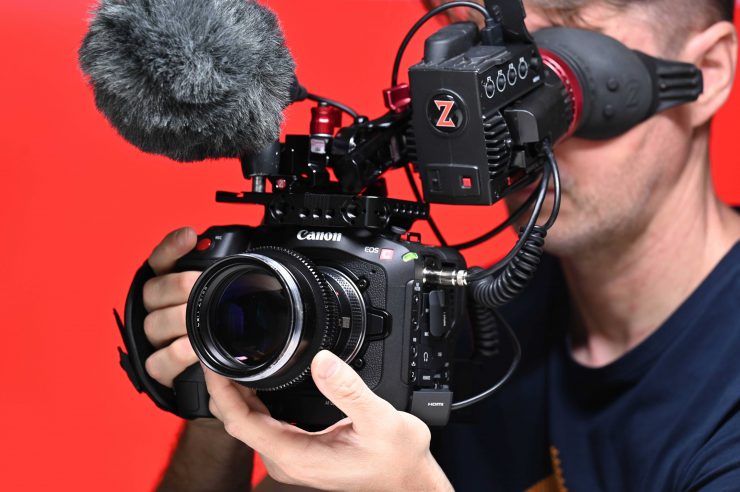
I rigged up a Zacuto Gratical and a Zacuto mounting system to the Top Plate and I also added a Sanken CS-M1 shotgun microphone by putting it inside a Sony CAC-12 Camera Microphone Holder.
This would be my go-to configuration when shooting handheld or on a tripod outdoors.
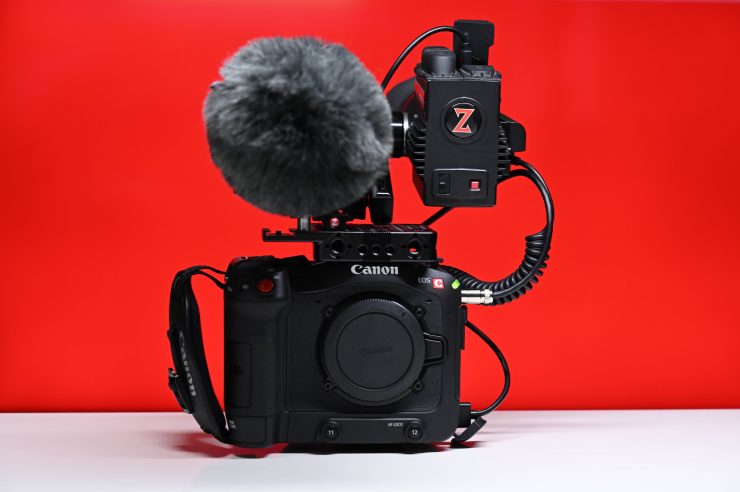
The whole idea behind how I have rigged both of these items up was to not make the camera top-heavy and also not to have the EVF or microphone sticking out to the sides.
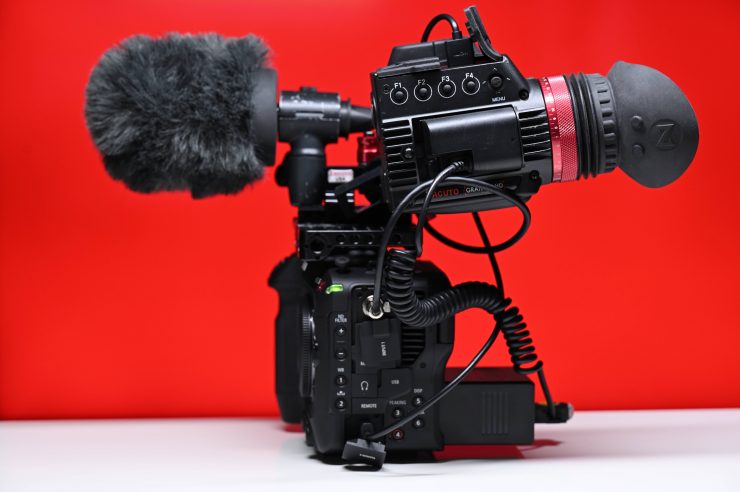
As you can see, I have rigged them up so that they are at the same height and I have put everything in a position so that the camera isn’t front-heavy or back heavy once you attach a lens.
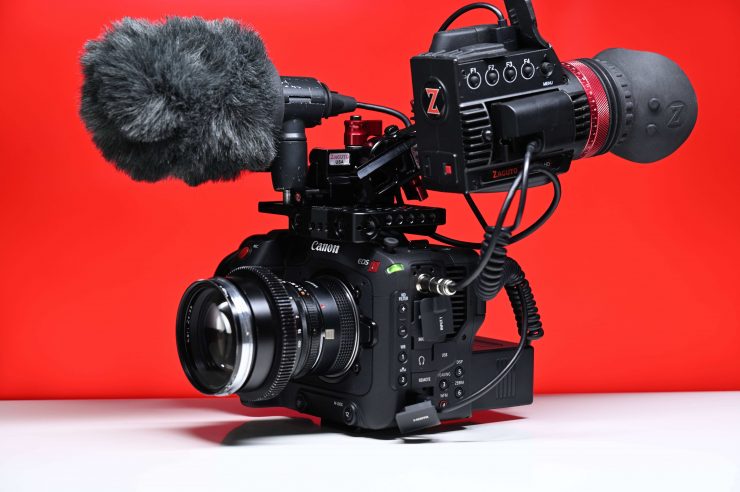
The EVF and the Core SWX NANO-C98 battery offset the weight of a lens and the microphone. The battery also has D-tap out so I can power the Zacuto Gratical.
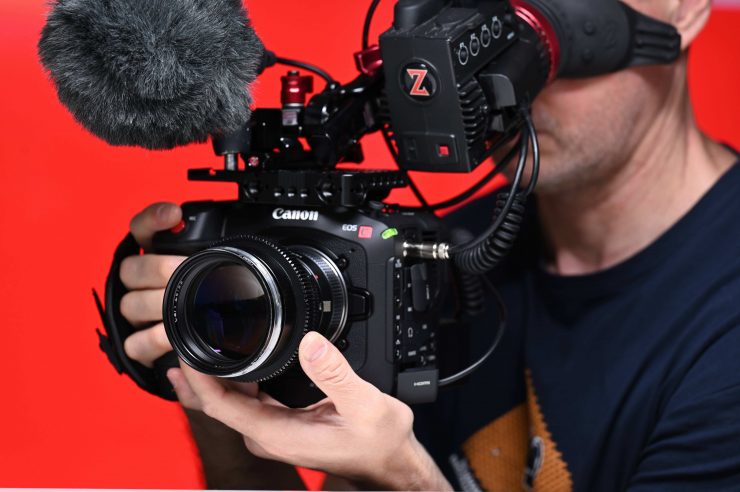
This combination and setup allow me to easily handhold the camera while still providing multiple points of contact.
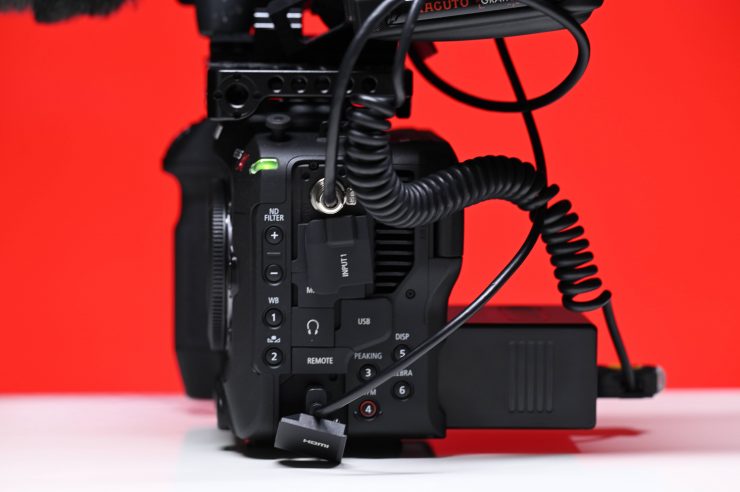
Like any small-sized camera where you have to add accessories, you start ending up with cables and parts everywhere and it quickly turns into a Frankenrig. Unfortuantely, once you start adding items like the Zacuto Gratical the camera’s footprint is going to get drastically bigger. There are no magical solutions that can fix issues like this.
I was reasonably happy with this setup but I really don’t like rigging up small cameras like this. But for certain shooting scenarios, you can’t beat an EVF. It allows you to accurately focus, expose and compose shots without trying to look at a small-sized LCD screen that is almost unusable in the sun.
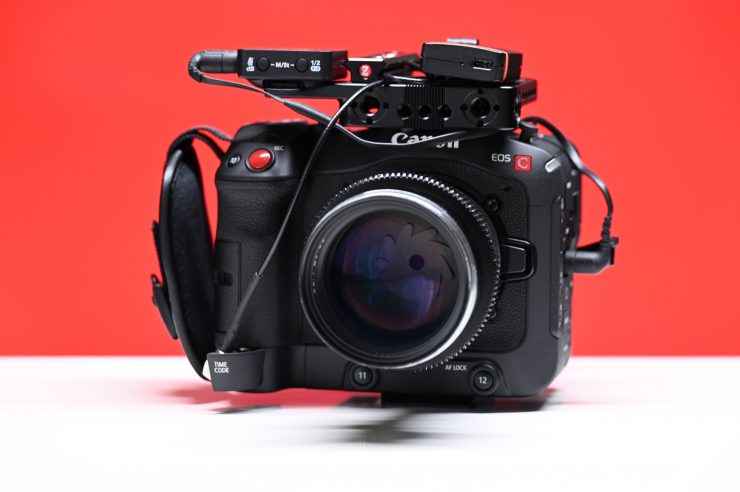
For the next setup and this is probably something that is more commonly what I would be using this particular camera for, I attached a Tentacle Sync E and a RODE Wireless GO II RX unit. As I primarily use the Canon C70 as a ‘B’ camera this configuration allows me to record time code synched footage and also receive a wireless reference track feed from the sound recordist. I could of course, also just use a different device provided by the sound recordist to receive audio and/or timecode.
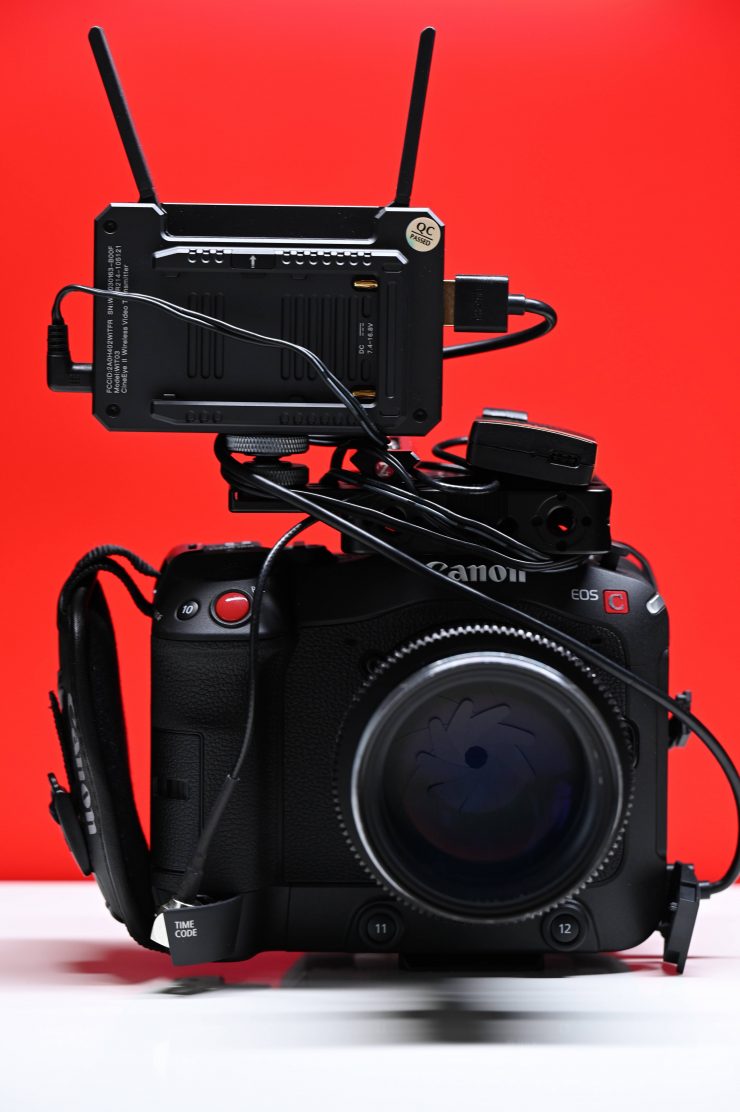
For another set up I had the Tentacle Sync E and an Accsoon CineEye 2. This allowed me to receive timecode and also send out an image that I could monitor on my smartphone. This is again, something I do quite often when using the C70 as a ‘B’ camera.
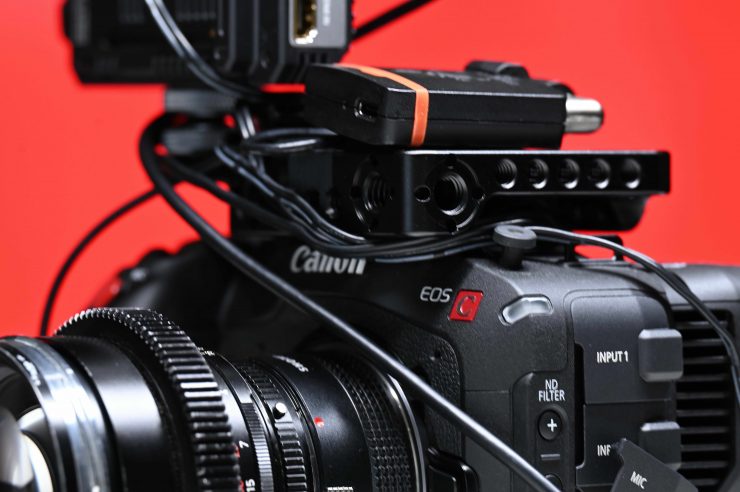
One of the benefits of using the Wooden camera Top Plate is that if you have long cables you can actually wrap them around the bottom of the cheese plate. This helps with keeping things neat and tidy.
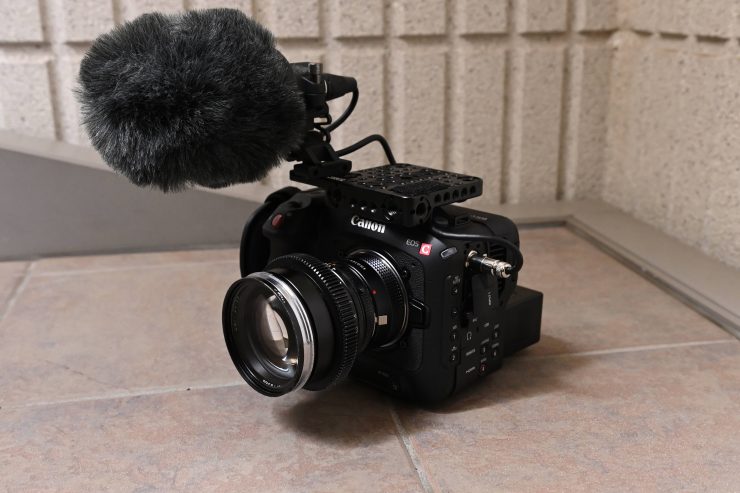
I could also use the Top Plate and then just attach the microphone mount that comes with the C70’s standard top handle. This is a quick and easy way of keeping the camera small, if you are working in environments where the back LCD screen is easy to see. It also allows you plenty of space to mount other accessories or even a monitor if need be.
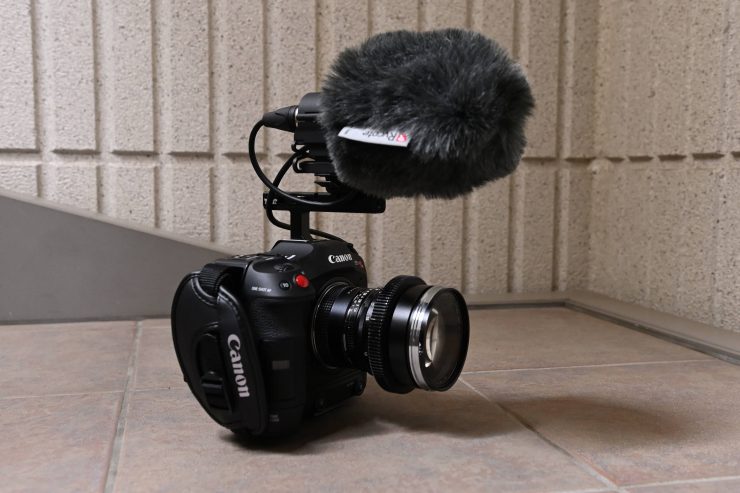
With the Mini Top Handle I didn’t find myself using it as much as I originally thought I would. It is useful if you want to just attach it directly to the top of the acmera and then attach the original microphone holder that comes with the Canon C70 handle.
Conclusion
I really like the Wooden camera Top Plate for the Canon C70. It is useful, easy to install, it doesn’t drastically increase the camera’s footprint, and it allows you to attach a wide array of accessories.
The Mini Top Handle is also useful if you need to keep the camera as small as possible but still attach a shotgun microphone or audio.
At the end of the day all of us have different needs and requirements when it comes to cameras and accessories. There is no wrong or right choice, because what works for me, may not work for you.
Like what we do and want to support Newsshooter? Consider becoming a Patreon supporter and help us to continue being the best source of news and reviews for professional tools for the independent filmmaker.

